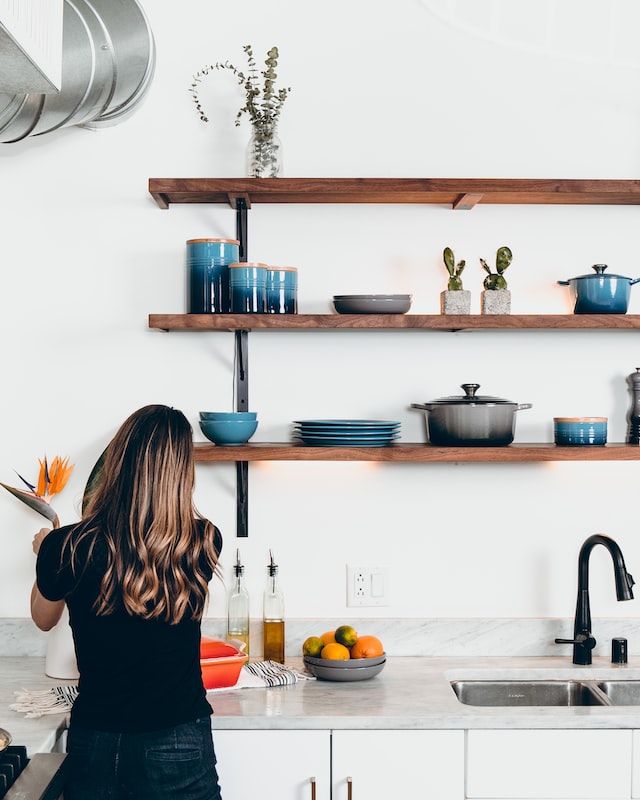A clean kitchen commands trust! And ensures a family’s health. A clean kitchen is not only responsible for the health of the food. Also, the performance of the cook. Cleanliness inspires enthusiasm and helps to keep the focus on the cooking process. And allows the cook to pour in all the love a dish needs for making it worthy of festivities. Kitchen cleaning can be simple or extremely complicated, depending on the ergonomic choices and taste of a cook. And maintaining cleanliness can be a challenge. Especially, when it comes to the choice of safe utensils and reagents that can clean while preserving the aesthetic aspects of a kitchen. But festivities demand a kitchen; ready to serve exciting food.
This article will try to guide the ones looking forward to an easy and listed paradigm for cleaning their kitchens quickly and effectively.
Essential kitchen cleaning tips
Making a schedule
A cleaning schedule is always helpful for keeping the accumulation of dirt and deposition in check. When it comes to oily kitchen tiles and vaporized instruments, they require regular cleaning for promising optimum performance. Furthermore, oil and moisture attract a lot of dirt and if dried with the same are almost irremovable without damaging the aesthetics. Thus regular cleaning can help a lot in terms of unnecessary hassle before the festivities, and preserving the kitchen in its most beautiful form.
Cleaning the wall, shelves, and cupboards
The walls, shelves, and cupboards are the most affected components that easily end up dirty. All kinds of depositions and dust can accumulate on them. Thus cleaning them regularly is a wise decision.
- While cleaning, everything else should be removed or covered, cupboards and shelves empty.
- Microfiber brushes with regular cleaning solutions must be used for maximum efficacy.
- The cleaning should involve water and soap solutions followed by drying.
- The cleaned tops of shelves and cupboards must be covered for deposition and dirt prevention.
- Backsplashes should be cleaned regularly, if dried and layered on top of another they can be impossible to remove.
- Insecticides must be used for killing detrimental creatures like cockroaches. But with safety precautions in place.
Cleaning the utensils
The utensils depending on the material and purpose must be cleaned with appropriate chemicals. Like detergent soap solutions and microfiber-lined equipment. And disinfectant should be applied followed by dry-cleaning.
Cleaning the appliances
The kitchen appliances like refrigerators, dishwashers, and ovens should be thoroughly cleaned. Using vinegar vapor for the microwave oven. And soap followed by water for the refrigerators and dishwashers. Here is a guide explaining how to clean kitchen appliances like ovens and fridges.
Microwave oven
Fumigation is perhaps the most effective way of cleaning a microwave to avoid chances of cross contaminations.
- Place a bowl of vinegar inside the oven.
- Heat it and see the door and inner walls catching moisture.
- Stop heating after fumigation, take out the bowl, and clean with water followed by a dry cloth.
The refrigerators
Due to low temperatures, the chances of microbial growth are low inside a refrigerator. But these low temperatures can preserve a pathogen in a dormant form for a long time. Thus cleaning it is essential.
- Empty the fridge
- Defrost the upper shelves
- Clean with soap and water, followed by vinegar and water wash.
- Dry with a clean cloth
Tile and floor cleaning
Depending on the floor type the cleaning strategy can vary.
- For marble or stone floorings a neutral pH solution must be used. Like a mind detergent, or a slightly corrosive solution like hydrogen peroxide.
- For tiles, with polish or vinyl coatings, mild vinegar solutions, ammonia, or detergent solutions can be used. Followed by scrubbing and drying.
- However, daily sweeping and vacuum cleaning can prevent the need for a huge cleaning venture before festivities. When it comes to the floor.
Cleaning the cleaning utensil
The cleaning utensil should be cleaned with utmost care. They can pose a serious risk of cross-contamination. It is wise to dip them in detergent water for a while, squeeze them and wash them with a washing machine at 60-degree celsius water temperature. Also, the dustbins should be cleaned with water and soap, followed by drying in the sunlight for optimal disinfection.
Conclusion
A clean kitchen is not just responsible for healthy food and a favorable cooking environment. It puts forward a statement of hygiene and taste. It is wise not to wait for the festive season for cleaning. Instead, a kitchen should be kept clean around the year. And if not daily, a weekly cleaning schedule must be maintained at all times.




Be First to Comment